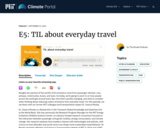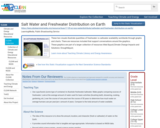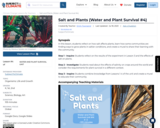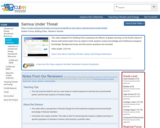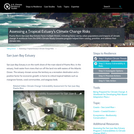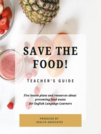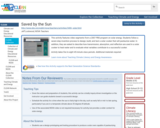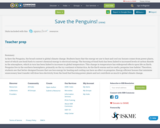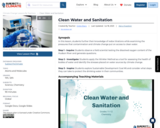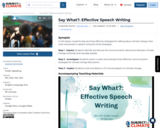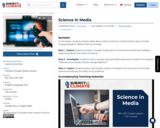SYNOPSIS: In this lesson, students reflect on how salt affects plants, learn how some communities are finding ways to grow plants in saltier conditions, and create a mural to share their learning with the community.
SCIENTIST NOTES: Soil is an important component for plants' survival. This lesson allows students to evaluate the impact of saline soil on plant growth. It explores two country case studies on ways farmers adapt to soil salinity to grow crops, especially testing out crops that can tolerate saline conditions. This lesson has passed the science credibility process and is recommended for teaching.
POSITIVES:
-This lesson creates a collaborative learning environment for students to share information about their learning with their community.
-Students do an art experiment to learn how salt affects plants.
-Students think about plant adaptations and changes to landscapes over time.
ADDITIONAL PREREQUISITES:
-This is lesson 4 of 4 in our K-2nd grade Water and Plant Survival unit.
-It is necessary to prepare materials for the Inquire section before class:
-Distribute 3 containers of water to each group.
-Add 2-3 drops of food coloring to each container to make red, yellow, and green paint. Alternatively, students can use watercolor paints.
-Distribute paintbrushes or manipulatives to paint with (ex. plant material, grasses, leaves, sponges, or Q-tips).
-Distribute cardstock for each student.
-Prepare a small container of salt for each table, but do not distribute it until it is time for students to sprinkle the salt on their paintings.
-In the Investigate section, students will read about farming in Bangladesh and Pakistan. The texts explain that both countries are in Asia, but you may want to show students where the countries are located on a globe or a world map to give them a more precise understanding of the countries' locations.
-Students need a large section of butcher paper for the final version of their group’s mural. Additional materials may include markers, paint, or crayons.
DIFFERENTIATION:
-Students can read on their own using the leveled texts about Bangladesh or Pakistan, or the teacher can read aloud to the whole group using the Farming in Bangladesh slides.
-Students can dictate their ideas to an adult to write about the mural.
-Students can answer specific questions about the mural one by one or work to put their ideas in paragraph form using either option in the Individual Writing Sheet.
-Possible extension: Share the mural with a group or organization in the community by displaying it in the neighborhood, in a city building, in a store, or in another school.
